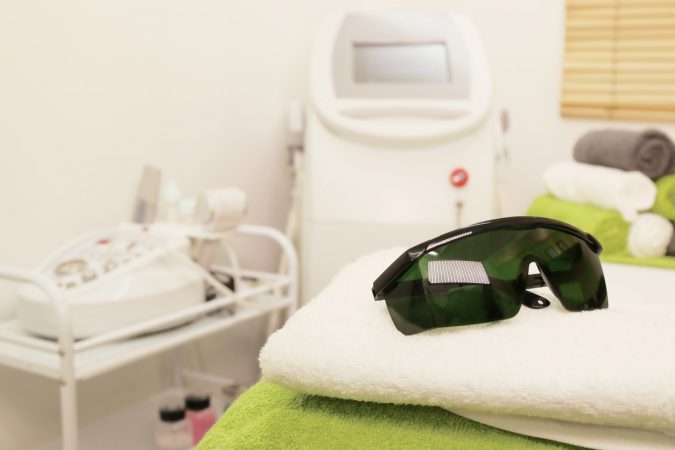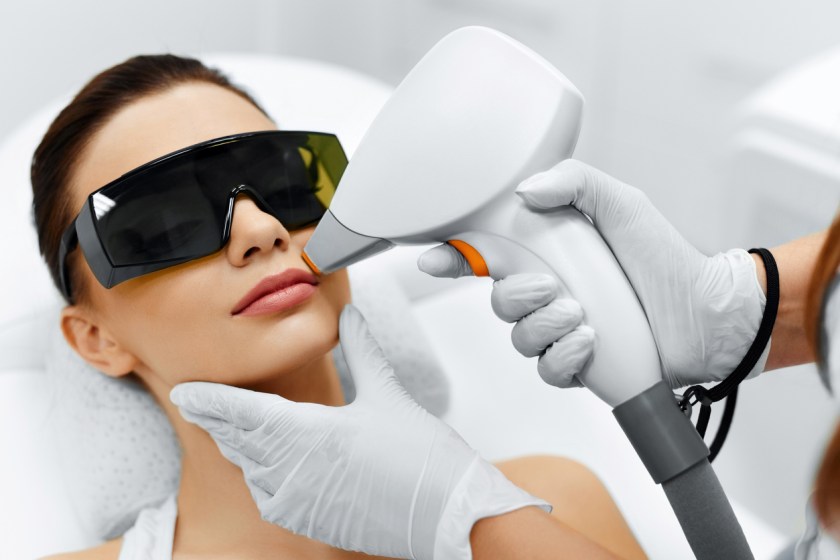Lasers and intense pulsed light (IPL) in the wrong hands are dangerous pieces of equipment and the adverse outcomes can be devastating for clients and practitioners alike. Here Bravura Education’s Managing Director Adjunct Associate Professor Elissa O’Keefe RN NP helps you get your clinic spring cleaned and compliant by guiding you through what you need to have in place in your clinic.
 The safe use of laser and IPL devices already sits within the framework of the principles and legalities of safe work practices. All health professionals whether AHPRA registered or not are familiar with their safe work responsibilities and are held accountable to them. The new national Australian and New Zealand Standard AS/NZS 4173:2018 Safe use of lasers and intense light sources in health care has been published and now is the time to do a spring clean of your clinical governance to have a compliant clinic. This is the first time intense pulsed light (IPL) technologies have been included in such a standard and the mandatory elements of the document are clear about what is expected of clinics, managers and staff alike. The new standards provide a framework to implement strategies to keep staff, clients and visitors safe from non-ionising radiation and are also an invaluable resource. A common query about any national standards though is whether they are mandatory? The short answer is “No”, but the long answer is well worth considering. In instances where legal action may be brought against a practitioner or company for negligence or otherwise, the adherence to standards will always be looked upon favourably. For example, a practitioner or company that burns a patient through the use of a laser or IPL who does not comply with AS/NZS 4173:2018 is more likely to be viewed as negligent in their care than someone who adheres to all relevant standards. So, implementing a laser safety program for your clinic is an essential risk management strategy. Laser safety programs should be practical, applicable to the type of treatments you are doing and sustainable in the long term. There are four primary areas that require attention under the new standards:
The safe use of laser and IPL devices already sits within the framework of the principles and legalities of safe work practices. All health professionals whether AHPRA registered or not are familiar with their safe work responsibilities and are held accountable to them. The new national Australian and New Zealand Standard AS/NZS 4173:2018 Safe use of lasers and intense light sources in health care has been published and now is the time to do a spring clean of your clinical governance to have a compliant clinic. This is the first time intense pulsed light (IPL) technologies have been included in such a standard and the mandatory elements of the document are clear about what is expected of clinics, managers and staff alike. The new standards provide a framework to implement strategies to keep staff, clients and visitors safe from non-ionising radiation and are also an invaluable resource. A common query about any national standards though is whether they are mandatory? The short answer is “No”, but the long answer is well worth considering. In instances where legal action may be brought against a practitioner or company for negligence or otherwise, the adherence to standards will always be looked upon favourably. For example, a practitioner or company that burns a patient through the use of a laser or IPL who does not comply with AS/NZS 4173:2018 is more likely to be viewed as negligent in their care than someone who adheres to all relevant standards. So, implementing a laser safety program for your clinic is an essential risk management strategy. Laser safety programs should be practical, applicable to the type of treatments you are doing and sustainable in the long term. There are four primary areas that require attention under the new standards:
1. Laser/IPL education
2. Competency in the use of lasers/IPL
3. Mitigating risk and protection from hazards
4. Regular audit
Do you understand what you are doing?
It’s not only standards that provide an industry framework for education. The Australian Radiation Protection and Nuclear Safety Agency (ARPANSA) is explicit about service providers being encouraged to undertake appropriate training courses and qualifications to gain a comprehensive understanding of the risks involved with the use of these devices. Furthermore, in Queensland, Western Australia and Tasmania education and training is built into their legislation and regulations and safety education remains the backbone of their licensing process. It is mandatory under the new standards that anyone who is a Class 4 laser user or operator has laser safety education. They state that “staff shall be trained in operating procedures, including handling and care of equipment, set-up, intraoperative monitoring, use of the controls and delivery systems, and use of all accessory equipment.”
For the first time in standards too this is the case for anyone who uses IPL, and we suspect that there are thousands of IPL operators in Australia who do not currently have this education. Do you know anyone who is operating these machines without having completed an accredited laser/IPL safety course? Do you think they’d be happy to be assessed against the standards in the case of a complaint? The standards are explicit about who needs education and training. The need for education now falls beyond just users and operators and essentially includes anyone who has contact with these devices. The standards list these people as follows:
1. laser safety personnel
2. laser users, e.g. surgeons, physicians, dentists, nurses and other allied health professionals
3. laser team members, e.g. laser operators, biomedical engineers, technicians, medical physicists
4. laser system service personnel, including either in house or contractor service personnel
5. incidental personnel, including medical photographers, observers, students, family members and industry representatives
Remember too that not all courses are going to be current and meet the requirements set out in the standards. In fact, if you haven’t done laser/IPL safety education in the last three years we recommend a refresher course. The requirements are that the course you have done include some specific elements, many of which are not covered by some courses. According to the informative section of the standards the courses are to have subjects on the operational characteristics of lasers and IPL, hazards, and principles and procedures for safe use.

Are you capable?
After education the next important area to have covered is competency in the use of lasers and IPL. The competency process is prescribed for laser users in Queensland and Western Australia as part of their supervised hours whilst they are on a trainee license. In these two jurisdictions there are specific practical hours expected to be completed under the direct supervision of a full license holder before full autonomy of practice is granted. This is not the case for all states and territories though and unlikely to be in the near future. What is clear though within the standards is that there is an expectation that the criteria for education, training and competency assessment is explicit in the workplace. Your clinic should have a policy that is clear about what laser safety education is expected and the process from induction through to independent practice. It needs to provide direction on who will supervise practice, a progressive list of skills and attributes required and how competency will be assessed and finalised.
Do you have the right clinical governance in place?
The most common method of mitigating risk and protecting against hazards is the implementation of standard operating policy and procedure documents in the workplace that are then adhered to by staff. The most common ones that are relevant to laser/IPL practice are:
1. Ocular/eye safety
2. Controlled access to laser/IPL rooms
3. Laser generated airborne contaminants (plume)
4. Test firing carbon dioxide lasers
5. Handling a fibre-optic delivery system
6. Roles and responsibilities of the Laser Safety Officer
7. Radiation Safety Protection Plan
8. Criteria for education, training and competency assessment
9. Flammability hazards and fire safety
10. Infection control
11. Incidents and accidents
12. Equipment inspection
Have you got it all right?
The standards recommend that laser/IPL safety audits be completed annually or more frequently if required. Elements of an audit will include: a gap analysis of laser/ IPL education with an intent to educate or refresh staff, having a current laser safety plan, the mitigation of risks including eye injury, plume and fire, documentation and observation of practice. There’s a sample checklist for audit included as an appendix in the standards to make this process easier. Laser and IPL clinical governance need not be onerous, if you’re interested in talking to someone about the needs of your clinic, please feel free to contact Elissa O’Keefe at elissa.okeefe@bravura.edu.au
For more news and updates, subscribe to our weekly newsletter.




